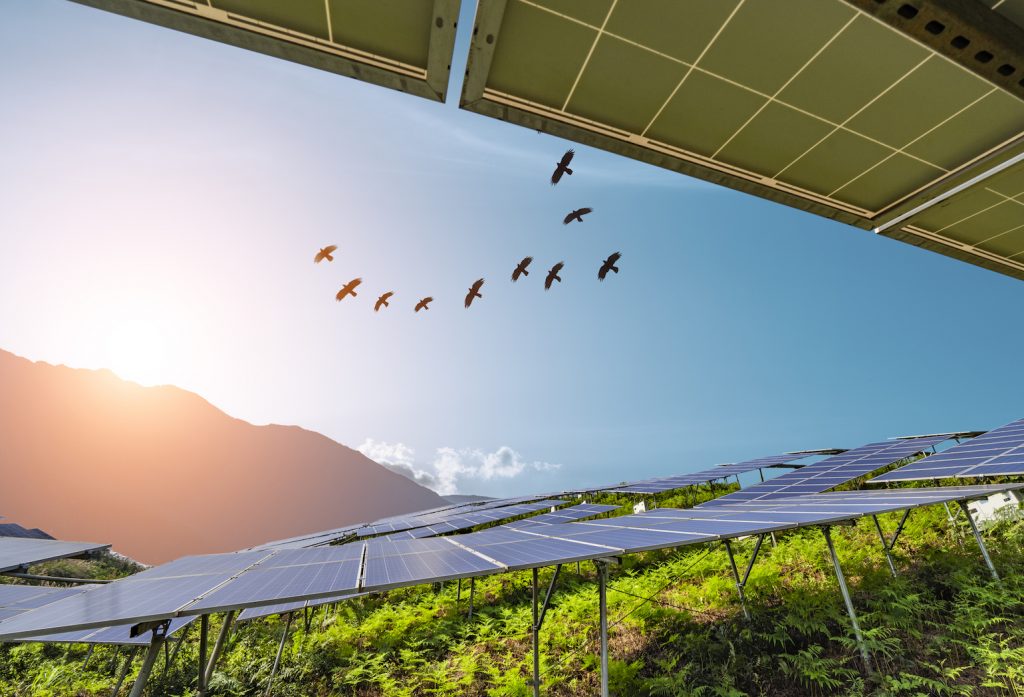Decarbonisation projects can have unintended consequences on the natural environment. One leading engineering firm is ensuring that the industry more effectively manages the impacts of such projects.
Assessing a project’s carbon footprint is often vital to getting it over the line. But if the driver for decarbonisation is the natural world, it is incumbent upon the construction and infrastructure sectors to also consider the other ways that projects affect local environments.
Last year, global professional services firm WSP acquired leading environmental consultancy Golder, further boosting its net zero strategies.
Environmental law specialist Tara Kennedy, WSP’s Energy Sector Lead in Earth and Environment, advises engineering decision-makers on how they can effectively mitigate their ecological footprint.
“From an environmental perspective, we are going through this world-changing transition as we move towards net zero – which we absolutely need to do,” she says. “At the same time, we need to understand what that means.”
For example, solar farms tend to increase the heat of the surrounding area, which can have an effect on wildlife, while offshore wind farms can disrupt natural feeding areas.
“A lot of our work focuses on biodiversity impacts to plants and animals,” says Kennedy. “In addition to climate change, one of the other huge challenges that we have at the moment is the biodiversity crisis and the loss of our natural environment.”
To address this challenge, understanding potential environmental receptors that are going to be impacted by a project is crucial. Engineers and project leaders should know, for example, what vegetation will be cleared and the species that are using that area of habitat.
“In practice, this may mean that rather than just putting a road on the most direct route, we might recommend diverting it around particular areas of vegetation,” says Kennedy.
“Or rather than having an overhead transmission line, we may recommend moving it underground to minimise impacts to species flying through the area to roost and becoming entangled in that infrastructure.”
Another consideration when building renewable energy sources is that many of the materials required to support the energy transition are rare earths and metals.
“Mining activities are critical to the construction of solar cells, wind, wind turbines, batteries and electrolysers,” she says. “This means more or expanded mining operations, and the demand for these products often means mines in places that were previously inaccessible.”
Competing interests
Kennedy says that integrating environmental considerations into engineering projects is often easier said than done, especially when there are tight deadlines and resource constraints.
“Working with engineers in a really effective way requires continuous collaboration to factor environmental considerations into the design,” says Kennedy.
“Ideally, we are involved from day zero to help inform what that initial early concept engineering design might look like. Engineering teams who come to us later in the process find that our ability to manage environmental impacts becomes more limited and potentially more costly for the client.”
Understanding community concerns about environmental considerations is also key to ensuring that a project doesn’t get held up later on in its life.
“We’re finding that community expectations have really changed in the last 10 years. The community expects clients to be mindful and sensitive to the local environment and the landscape in which they’re operating,” she says.
“If the community doesn’t see that coming through in the design, they will push back – and that can create lengthy delays and additional costs for projects.”
Kennedy believes that many engineers will be surprised at how supportive clients are of taking into account broader environmental considerations.
“There’s often a perception that the client won’t want to spend the money or the time on these issues. But we’ve found that clients themselves are really receptive, and they appreciate these considerations being raised,” she says.
“Many clients themselves have commitments around net zero and environmental impact. My key takeaway would be for engineers to feel empowered to have these conversations and work closely with environmental specialists to better incorporate biodiversity considerations into project designs.”
To find out more about how engineers can protect nature as we tackle net zero, and to learn about WSP’s ambitious commitment to halve the carbon in their designs and advice to clients by 2030, go to the WSP website or contact the team at NetZero.Aus@wsp.com.
